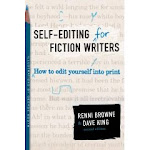The week between Christmas and New Year’s—when the regular world almost stops (except for those after Christmas returns and shoppers), business go to skeleton staff, and writers don’t expect contracts may have a January 3rd deadline looming. (I have two due on February 1st).
I won’t talk about goals ... it’s not quite the New Year. But I will reflect on the past year. Has it been a successful year in terms of my writing career? All in all, I would say, yes. I’ll look at four areas of writing (Janice Thompson talked about the four books she was writing at any one time, and it’s stuck with me): the book I’m developing, the book I’m actually writing, the book I’m editing, and the book I’m marketing. To those four I’ll add a fifth: how I’ve helped other writers.
• Development. I’ve pushed out at least five proposals between deadlines this year, and have come to trust my judgment about what stories “work” for my publisher. In other words, I’ve increased my chances of landing contracts. At the moment I have two contracts pending. I also went on a research trip to Texas.
• Writing. I am writing better. My first drafts require less work to polish than they used to, most of the time. And I’m more aware of nuances in writing to improve my craft. I write fast—when I write. I need to improve my discipline.
• Editing. I faced my first truly negative content review—and survived. I just learned the book has gone on to the next stage. Phew.
• Marketing. While I feel like a neophyte, I must be doing something write because people are beginning to recognize my name. And oh, yes, I’ve discovered a talent for selling books one-on-one in unusual venues, like craft fairs.
• Helping other writers. I’ve spoken to a couple of writers groups, but two new ventures for me were judging the Carol awards for ACFW and, more importantly, partnering with a new writer who will get her first contract in February!
As you look at those five areas, how have you grown? Have you grown in ways you didn’t expect? Where do you see the need for improvement?
Monday, December 27, 2010
Sunday, December 19, 2010
Things a Novelist Needs to Know About Writing for the Internet
Many novelists that I run into tell me they don’t need to know how to write for the Internet because they only write books. That’s not exactly accurate. If a writer has an online presence—a blog or a website or they contribute to a blog or a website—they need to know how to connect to the Internet reader. Otherwise, they’re wasting their time, and let’s face it—no writer I know has time to waste.
So here are the basics:
People Read Differently on the Internet
One of the great things about the Internet is the ease with which people can find information. Readers are often looking for information fast. They want to be able to read or scan the content quickly to find what they want. That means the author must make organization and readability of primary importance.
Studies also show that people generally read up to 25% slower on computer screens. The reasons are complex, but here are a few:
- Computer monitors are harder on the eye than paper
- They generally have fairly low resolution, so the words aren't as sharp
- Also, while the contrast between ink and paper is usually strong and fairly consistent, monitor settings can vary widely depending on type and settings
Because of these factors, most people find it tiring and even frustrating to read long articles online.
Here’s how to compensate:
- Utilize short paragraphs, never more than 100 words in length
- Don’t indent paragraphs, but skip a line between them to allow time for the reader’s eyes to rest
- Front load information utilizing the inverted pyramid to disseminate information
- Utilize headings, lists and bullet points
- Use active verbs and specific nouns
- Write tight
These tips will make your online presence much stronger, making it easier for your readers to find you.
Monday, December 13, 2010
DISAPPOINTMENT
It had to happen sometime. My editor hated my baby, my latest manuscript. She didn't like the characters, she didn't like their motivations, and thought they overreacted.
Of course I've had (many) manuscripts rejected before, and I've had edits on all my books. However, this was the first time I've submitted a contracted book that came back from the editor asking for a transplant.
We've all been there: the manuscript we've slaved over and poured our hearts into has come back, rejected. Sometimes the editor is kind enough to explain why, and that can hurt worse than simply saying "no."
So as I write today, please don't take this as a complaint against my editor. She's the greatest, and more than that, I believe she's right (as difficult as it is for me to admit that.) What have I learned through the process?
Listen to your critique partners. I was resistant to this degree of change, even though I suspected it might be coming. Others had warned me. Discover the fine line between opinion and genuine problems.
It's not personal. Although I discovered this was a very personal story as I examined it. The raw emotions reflected the time in my life when I first wrote the story (dealing with teenage angst in my children, over a dozen years ago.)
Take the time to do it right. I have also discovered that the areas I let slide--although I suspect they could be better--come back later for revision. Trust myself in the first place and redo.
Manage my time better. Part of the problem with taking the time was that I hadn't given myself enough time. My grandson came two weeks early and threw my whole schedule off. But if I had been better prepared ... it would have gone more smoothly.
Trust the process--and the Lord. I am asking God to make this book one of my most powerful.
Real life doesn't always seem real in books. I based my heroine's employer loosely on the place where I worked for ten years. Yet my editor kept saying "that's not believable"--about things I had experienced first-hand. I had to change or explain better.
What are some particularly difficult rewrites or rejections you've been asked to do? What did you learn from the experience?
Of course I've had (many) manuscripts rejected before, and I've had edits on all my books. However, this was the first time I've submitted a contracted book that came back from the editor asking for a transplant.
We've all been there: the manuscript we've slaved over and poured our hearts into has come back, rejected. Sometimes the editor is kind enough to explain why, and that can hurt worse than simply saying "no."
So as I write today, please don't take this as a complaint against my editor. She's the greatest, and more than that, I believe she's right (as difficult as it is for me to admit that.) What have I learned through the process?
Listen to your critique partners. I was resistant to this degree of change, even though I suspected it might be coming. Others had warned me. Discover the fine line between opinion and genuine problems.
It's not personal. Although I discovered this was a very personal story as I examined it. The raw emotions reflected the time in my life when I first wrote the story (dealing with teenage angst in my children, over a dozen years ago.)
Take the time to do it right. I have also discovered that the areas I let slide--although I suspect they could be better--come back later for revision. Trust myself in the first place and redo.
Manage my time better. Part of the problem with taking the time was that I hadn't given myself enough time. My grandson came two weeks early and threw my whole schedule off. But if I had been better prepared ... it would have gone more smoothly.
Trust the process--and the Lord. I am asking God to make this book one of my most powerful.
Real life doesn't always seem real in books. I based my heroine's employer loosely on the place where I worked for ten years. Yet my editor kept saying "that's not believable"--about things I had experienced first-hand. I had to change or explain better.
What are some particularly difficult rewrites or rejections you've been asked to do? What did you learn from the experience?
Sunday, December 5, 2010
How to Format a Manuscript for Submission
Every industry has standards and the writing community is no different. However, since the advent of email submissions, the rules have gotten muddy. Today I’ll share some general rules to follow that will help you present yourself professionally.
Font Size and Selection
Times New Roman or Courier – 12 point – are still the gold standard. Try not to vary from these two options unless the submission guidelines request it.
Spaces Between Words and Sentences
There should only be ONE space between words and sentences. Many of us learned to type during a time when it was the rule to hit the space bar twice after the ending punctuation of a sentence. This is no longer the case. There are many reasons for this change, but one is that it saves paper on a book length manuscript.
Justification
Always justify your margins left. NEVER justify them left and right (like a newspaper).
Line Spacing
There are two ways to space a document for submission. In times past, there was only one acceptable spacing option, double spacing. This has changed with the formatting needs of the Internet.
Special Note: When submitting the sample chapters of a book length manuscript double spacing is the ONLY industry standard accepted.
Single Spaced Document
The entire document is single spaced and paragraphs are NOT indented. An extra space is added between paragraphs.
Example:
When painting your garage floor the first thing you have to do is prepare the surface. You need to give it a thorough cleaning. Consider using a pressure washer to save time when you need to remove stubborn dirt and debris. If the garage floor has been painted in the past, it’ll be necessary to remove all traces of the old paint.
After cleaning, allow the concrete time to dry. This may take several days depending on the climate and weather. After it’s dry you’ll need to fill any cracks or holes. You can find the correct supplies at your local hardware store. Be sure to follow the manufacturer’s directions when applying.
Double Spaced Document
The entire document is double spaced and paragraphs ARE indented. There is NO extra space between paragraphs.
Example:
When painting your garage floor the first thing you have to
do is prepare the surface. You need to give it a thorough cleaning.
Consider using a pressure washer to save time when you need to
remove stubborn dirt and debris. If the garage floor has been
painted in the past, it’ll be necessary to remove all traces of the
old paint.
After cleaning, allow the concrete time to dry. This may take
several days depending on the climate and weather. After it’s dry
you’ll need to fill any cracks or holes. You can find the correct
supplies at your local hardware store. Be sure to follow the
manufacturer’s directions when applying.
All of these rules are not just arbitrary. They help an editor avoid eyestrain when reading hundreds of manuscripts during the course of a week. They also help those who upload or in rare cases, typeset the submitted material.
Font Size and Selection
Times New Roman or Courier – 12 point – are still the gold standard. Try not to vary from these two options unless the submission guidelines request it.
Spaces Between Words and Sentences
There should only be ONE space between words and sentences. Many of us learned to type during a time when it was the rule to hit the space bar twice after the ending punctuation of a sentence. This is no longer the case. There are many reasons for this change, but one is that it saves paper on a book length manuscript.
Justification
Always justify your margins left. NEVER justify them left and right (like a newspaper).
Line Spacing
There are two ways to space a document for submission. In times past, there was only one acceptable spacing option, double spacing. This has changed with the formatting needs of the Internet.
Special Note: When submitting the sample chapters of a book length manuscript double spacing is the ONLY industry standard accepted.
Single Spaced Document
The entire document is single spaced and paragraphs are NOT indented. An extra space is added between paragraphs.
Example:
When painting your garage floor the first thing you have to do is prepare the surface. You need to give it a thorough cleaning. Consider using a pressure washer to save time when you need to remove stubborn dirt and debris. If the garage floor has been painted in the past, it’ll be necessary to remove all traces of the old paint.
After cleaning, allow the concrete time to dry. This may take several days depending on the climate and weather. After it’s dry you’ll need to fill any cracks or holes. You can find the correct supplies at your local hardware store. Be sure to follow the manufacturer’s directions when applying.
Double Spaced Document
The entire document is double spaced and paragraphs ARE indented. There is NO extra space between paragraphs.
Example:
When painting your garage floor the first thing you have to
do is prepare the surface. You need to give it a thorough cleaning.
Consider using a pressure washer to save time when you need to
remove stubborn dirt and debris. If the garage floor has been
painted in the past, it’ll be necessary to remove all traces of the
old paint.
After cleaning, allow the concrete time to dry. This may take
several days depending on the climate and weather. After it’s dry
you’ll need to fill any cracks or holes. You can find the correct
supplies at your local hardware store. Be sure to follow the
manufacturer’s directions when applying.
All of these rules are not just arbitrary. They help an editor avoid eyestrain when reading hundreds of manuscripts during the course of a week. They also help those who upload or in rare cases, typeset the submitted material.
Subscribe to:
Comments (Atom)











